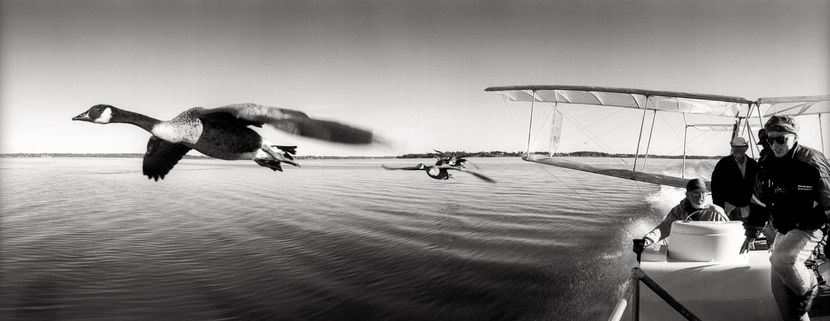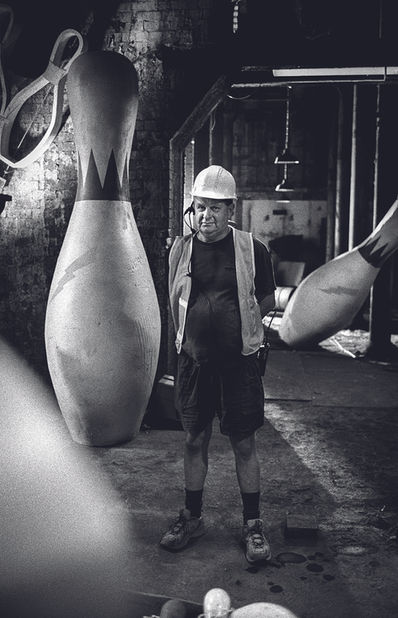John's Photo Gallery
John Platt
CCP asks John Platt the deep questions
First up, I would like to thank Iain at CCP and Wendy McDougall for inviting me to be this month's featured photographer. If you take a trip to CCP, whether for the first time or, like me, numerous times over the last couple of years, you'll find a genuine welcome and interest in whatever it is that you have bought in to discuss. Be it an image to print, a print to frame, a negative to scan or all of the above. Through their Photo Competitions, newsletter, this ongoing, monthly recognition of a working photographer or the simple joy of just having a chat, CCP has created a sense of community, emphasised by the warm, genuine welcome given to all who walk through their doors.
1.What gets you out of bed every day?
What motivates me to get out of bed? There are times when I bounce out with anticipation, excited to review images from a previous day's work. There are other days, days or weeks when there is no work, or the imagery falls short of one's expectations. The doubts creep in, and it can be a bit of a roller coaster. I have a chat with myself, then get up and keep going, keep pushing forward. I imagine I'm not alone here, and thankfully, there are more of the former than the latter.
2. Who is the photographer/artist that has inspired you the most?
There is no single photographer, but rather an era and the portraits they all produced. The American photographers of the 1930s-1960s, starting with the Farm Security Administration photographers Dorothea Lange and Walker Evans. Then Edward Weston, Eugene Smith, Eve Arnold, Gordon Parks, and the list goes on. Inspired by their work, environmental portraiture became my area of primary interest. Capturing the subject within their environment, utilising the background to help explain who the subject is.
3. What current camera are you shooting with?
I have recently moved to Nikon after ten years with Fuji. While on set, I always shoot with two bodies. I use a Z9 and Z8, along with a selection of Z f/1.8 S-series primes for interiors or night shoots and a 24-70mm f/2.8 and 70-200mm f/2.8 for day exteriors. I also use the Fuji GFX 100II for portrait, gallery and key art/poster shoots.
4. When you are on a shoot do you play music? What other essential items do you have with you for a successful session?
I always have music playing on set during a shoot; it sets the mood and helps everyone relax. The only essential item I bring is my ears. Listening to and considering ideas, regardless of their origin. Discussing options for framing, poses, expressions, or just having a chat before, during, or after a session is so rewarding and allows all of us to feel comfortable and heard.
5. In the digital world how important is the print?
The print is more important than ever. In the digital world, where the vast majority of images are viewed on devices with screens no larger than the palm of your hand, producing a print and having it framed is the ultimate way to display one's work.
It gives you a sense of achievement, inspires and reminds you of why you do what you do. To gift or receive a framed print of your or another's work is a timeless, physical object that endures. Cherished by the current generations and passed down to those to come.
6. B/W - Colour - Analogue - Digital.
Put these words in your order of preference and tell us why.
B/W - DIGITAL - ANALOGUE - COLOUR
B/W: Black and white has always been, and remains my first love.
DIGITAL: I no longer bask in the warm glow that Analogue creates for some. I've done my time in darkrooms, first as a photographer's assistant and then in my own, always struggling to find the time, assembling and then breaking it down. I give thanks that I learnt photography in the days of film, but equal thanks that I live in a digital world where I can open and close my computer's digital darkroom at the touch of a button. Creating images equally as moving and satisfying as I did in the hours of breathing chemicals, bent over developing trays in the dark.
ANALOGUE: I'm glad Analogue has made a comeback. Allowing younger photographers to discover a world that is far simpler with its limited options for manipulation. Having a finite number of comparably expensive 24/36 frames to shoot teaches consideration and patience. Working with a manual camera, one is forced to learn the basics of photography, the relationships between Shutter speed, aperture, and ISO. In the 'what you see is what you get' world of digital, the tendency is to let the camera dictate how to shoot, denying the less experienced photographer the opportunity to learn the basics and limiting their ability to learn more advanced photographic techniques.
COLOUR: I very rarely consider colour unless I must, for my work. Beyond that, it seldom comes into consideration when I shoot. Light and composition, in that order, are what drag me to a prospective image, and more often than not, it will shout out to me based on those two parameters
7. Have you exhibited your work, and other than the print, how important was the framing process to you?
I had one exhibition, many years ago. At the time, I was unable to afford the skills of an expert framer, so I had the frames made to size and cut the mats myself. Looking back and knowing what I know now, I would never do it that way again. A framer is a second, invaluable eye in the process of creating a final piece of art. The framer's contribution in experience and expertise to the successful completion of either a singular work or a multiple-piece exhibition should never be underestimated.
8. What defines a great image?
In my view, a great image is created when the photographer, subject and viewer all have an emotional connection. The first is between the photographer and the subject, and the second is between the viewer and the image.
9. What is your favourite photo? Why?
Impossible to choose one. From the ongoing 30-odd-year project of photographing my first son under the Sydney Harbour Bridge to my other kids dancing with the innocence of youth after a rainstorm. The still life of tulips, which to me is a sensuous dance between the flower's stems. A couple of cast portraits from shows I've worked on to the first crew image that I thought worthy of being given as a thank-you gift to the three featured individuals, and the one that started the whole crew BTS project, which, 35 years later, has become my first published book, 'Observations on Set 1983-2005'. There are many others, but the vast majority revolve around families. First, my immediate one, and second, the people who make up the family of the industry I love.
10. What is the best photography advice you have been given? Tell us by who if you can or want to?
"Don't just look, observe," my father..
11. When you are not taking photos, what are you doing?
When I'm not working, I like to stay fit by swimming laps and walking
High Point
There are two, My 'Observations on Set 1983-2005' book and The 'Fury Road' vehicle shoot.'Observations on Set 1983-2005'Observations on Set is a 228-page hardcover coffee table book featuring the film crews I worked with over the first 20 years of my career. A second volume, Observations on Set 2005-2025, will be published towards the end of 2026. These books are unique in that I know of no other that aim the spotlight and celebrate those who work behind the scenes to bring any film or TV project to fruition. The project took over 8 years, and as a self- publisher, I took on all aspects of its creation and production, from taking all the photos to designing the layout, writing and editing the text, and finally finding a printer. The book has received a hugely positive response, and I could not be more thankful.
'Mad Max Fury Road' vehicle shootThe Mad Max franchise holds a hugely important position in Australia's film history. I'd worked as a junior in the Camera Department on 'Mad Max Beyond Thunderdome' and had experienced first-hand the carnage of the final vehicle chase.
It didn't take a genius to know 'Fury Road' would be the same, just on a larger scale. I wanted to photograph the vehicles in their pristine state as a historical record before they were trashed on the plains of Namibia.
My point of contact was Producer and 1st Assistant Director P.J. Voeten.PJ saw the merit in the idea and took it to Director George Miller and Producer Doug Mitchell, who gave the go-ahead.
The next step was to see what I'd be photographing. I was met at the vehicle workshop by Production Designer Colin Gibson, given a short tour and left to take it all in.To say I was blown away is an understatement; first, by the scale of the construction, and second, by the level of detail of the individual vehicles.
It was the effort applied to the details that solidified my idea of how I wanted to shoot the project. Contacting Gaffer, Richard Mason. I explained I wanted to treat this like a high- end studio car shoot. I wanted our subjects to be eye-grabbing objects of desire and glow as if they had come straight off the production line.
Each one was a bespoke work of art. I wanted to showcase their unique individuality and do justice to the efforts of their brilliant creators. Seventy-five cars, trucks, and bikes were shot over three weeks in July 2010. A project I conceived and completed, for which I remain incredibly proud.
Low Point
I’ve been very lucky. There have been very few low points. Those that have arisen, though difficult to deal with at the time, in hindsight have been opportunities to learn.
John Platt
August 2025

























